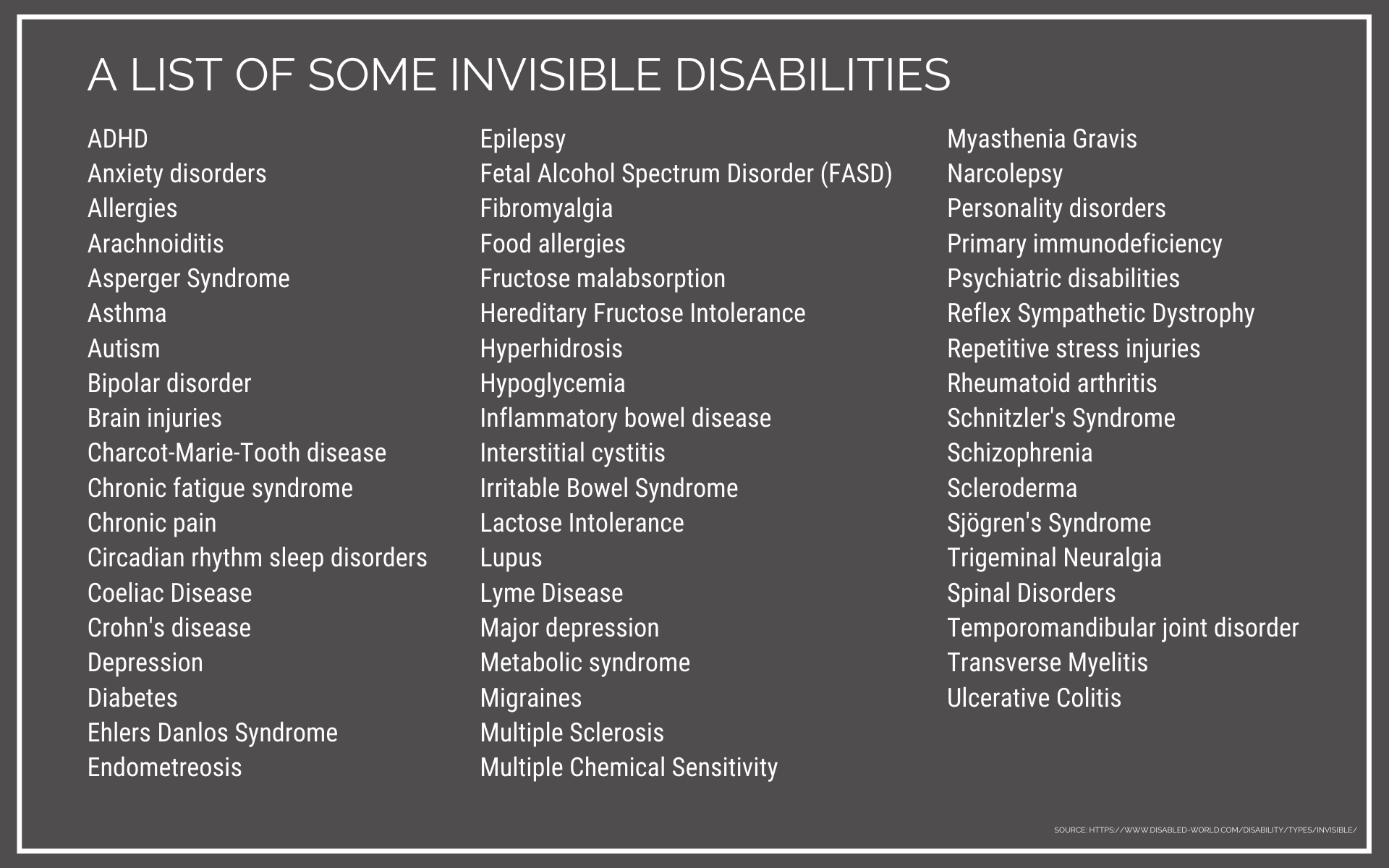The Centers for Disease Control and Prevention (CDC) reports that 26% of Americans are living with a disability, from a visual or physical impairment to cognitive problems. Since the passage of the Americans with Disabilities Act (ADA) in 1990, millions of people with varying degrees of disabilities have experienced increased independence and greater access to goods and services.
However, even as recent as 2015 it was clear progress still needed to be made in a number of areas, including education and digital accessibility. In 2017, the National Center for Education Statistics estimated 1 in 5 undergraduate students, and more than 1 in 10 postbaccalaureate students, had a disability.
When you think about an accessible college experience, it is likely you think of ramps into buildings or perhaps the allowance of adjusted testing periods. But you must also consider your website and any digital materials that may be disseminated to students, faculty and staff.
Improving access to valuable information and tools for individuals with disabilities is always a necessary and worthwhile endeavor, but rarely is it more important than when the tools and information in question are directly related to protecting the safety of people and the environment.
The increased use of e-learning and other technologies in environmental, health and safety (EHS) training programs presents both new opportunities and new struggles for creating and delivering effective and engaging training content that is available to all learners.
While the idea of accessibility may seem obvious, it is important to understand the laws and standards that colleges and universities need to follow in order to create an inviting, well-rounded and accessible educational atmosphere.
What Does it All Mean?
Before you can begin creating an inclusive campus experience, you must understand the various terms you will encounter.

Defining Disabilities
While many definitions of disability, such as those enforced by the Social Security Administration, are somewhat narrow and often include a requirement for how long a disability has affected the person, the ADA uses much more inclusive terms.
The ADA defines a disability as “a physical or mental impairment that substantially limits one or more major life activities,” or a record of having such impairments in the past. These broad definitions mean more students — or faculty and staff — can fall under the umbrella of being considered for disability accommodations.
Some disabilities are easy to identify, such as those requiring the use of a mobility device, while many others are considered hidden disabilities. Sometimes called invisible disabilities, this umbrella term encompasses those disabilities that are not immediately apparent and mostly applies to neurological issues, though some physical disabilities may classify as “hidden” as well.

Defining Accessibility
When exploring how to make any aspect of your school and its facilities more inclusive of those with disabilities, the goal first and foremost should be accessibility.
In the simplest terms, accessibility occurs when a person with a disability has the opportunity to access the same services and information as a person without a disability, in an equally effective manner.
Ideally, accessibility will be in place from the very beginning of any project. Think about an older building that doesn’t have an elevator installed (and therefore did not consider accessibility). This may create an inconvenience for a person without disabilities, but it could make navigating the building impossible for someone with a walking disability.
Considering accessibility from a physical perspective seems obvious, but what about digital accessibility? When digital content creators don’t take into consideration the numerous “hidden” disabilities, their content is essentially rendered useless for an entire segment of people.
And if that content has to do with regulations or safety measures, it is especially dangerous. After all, if safety content is not available to every potential user, it may as well not exist to anyone.
Defining Accommodation
We are likely all familiar with the word “accommodation” and understand it as providing what is needed for convenience, such as installing a ramp for easier building access or adding captions to a video for those who have a hearing disability.
But to get a better understanding of how accommodation works in the context of people with disabilities, it is helpful to think of it in relation to accessibility. In that dual relationship, accommodation is the reactive step taken when accessibility has not been properly addressed, or perhaps even anticipated.
Accommodations tend to be easily planned for visible disabilities, such as in instances where people require the use of a wheelchair or need auditory instead of visual content. However, hidden disabilities tend to be the ones that aren’t always considered, especially when it comes to digital content.
Among the most common digital accommodations made for students with disabilities are the addition of captions throughout videos and ensuring accurate, usable screen readers site wide.
Looking for more online safety training content?
VIEW THE 800+ COURSES AVAILABLE!
Online Training Provides Improved Options

Educational institutions tend to be highly committed to occupational health and safety, environmental health and protection, and regulatory compliance. In addition to the everyday safety concerns found in any workplace, college and university campuses are often home to numerous operations that can pose hazards to people and the environment, including research and development programs in just about any subject you can imagine.
Campus operations also fall under a wide range of legal and ethical requirements related to ensuring a safe campus for students, faculty and staff, and to being good environmental stewards and responsible members of the larger communities in which they reside.
Colleges and universities are some of the most thorough and consistent providers of EHS training and they value consistent and effective training. While schools employ a variety of instructional approaches and delivery methods, they are regularly turning to online, cloud-based solutions to deliver at least a portion of their training content.
There are various reasons for this shift. Online training courses are affordable, use time efficiently and can provide consistent content delivery across multiple locations at the learner’s convenience. What’s more, e-learning technologies have advanced to the point where they can provide significant advantages for learner engagement and knowledge retention in certain subjects.
Engaging multimedia content, interactive elements, adaptive scenario-based instruction and assessments have been proven to create better training outcomes, at lower costs, with greater accountability than traditional training methods, across a wide range of topics.
It is crucial for training within a college or university to be accessible, whether that training is over campus safety or human resources topics. When done correctly, technology-based training solutions such as online courseware can increase ease of use for all learners, regardless of their disability status.
Unfortunately, that same technology can also increase barriers to accessibility if it was not properly considered in the design of the courseware or learning management systems. And when designers do focus on accessibility, they often avoid inclusion of the very features that make online training so effective, such as multimedia and interactivity, because these features present additional challenges to achieving a universally accessible product.
Understanding Disability Laws

Although the first major piece of legislation regarding people with disabilities wasn’t in place until the 1970s, there have been many laws since then that have further expanded protections and requirements for both public and private entities.
Rehabilitation Act of 1973
Enacted under President Richard Nixon, the Rehabilitation Act of 1973 was aimed at creating an equal playing field for people with disabilities. Among its many purposes, the Rehabilitation Act expanded special federal responsibilities with respect to individuals with disabilities
While you may not be familiar with the Rehabilitation Act in full, you are likely familiar with two of the more well-known sections, whether by name or by their areas of purview.
Section 504 is designed to protect people from being discriminated against based on their disability status. In particular, Section 504 states that no person with disabilities shall “be excluded from participation in, be denied the benefits of, or be subjected to discrimination under any program or activity receiving federal financial assistance.”
Essentially, any institutes, including colleges and universities, or programs that receive federal funds may not discriminate against a person based solely on their disability status.
Section 508 applies the standard of equality for people with disabilities to electronic and information technology (E&IT). Under Section 508, federal agencies have strict requirements for developing, maintaining or using any E&IT that may be accessed by an individual with disabilities, federally employed or not.
Beyond that, the law specifies that federal agencies must provide information and data access to people with disabilities that is comparable to the access available to those without disabilities.
On January 18, 2017, the U.S. Access Board issued a final rule that updated accessibility requirements covered by Section 508 in response to market trends and innovations in technology. The final rule went into effect January 18, 2018.
Among the many changes included in the final rule are the application of Web Content Accessibility Guidelines (WCAG) 2.0 requirements to websites and all non-web electronic documents, aligning Section 508 with international standards and addressing equal access for people with cognitive, language and learning disabilities.
Americans with Disabilities Act of 1990
In 1986, the National Council on Disability drafted the first version of what would become the Americans with Disabilities Act, signed into law July 26, 1990, by President George H.W. Bush.
While there are many specifics, just as there are in any piece of legislation, the main goal of the ADA is “to provide a clear and comprehensive national mandate for the elimination of discrimination against individuals with disabilities.”
The ADA is similar to the Civil Rights Act of 1964 but goes beyond making discrimination illegal. The ADA also requires employers to provide reasonable accommodations to employees with disabilities and imposes accessibility requirements on public accommodations.
The main subchapters of the ADA that people are likely familiar with are known as Titles I, II and III. Each section is similar in nature but they provide clear and consistent standards addressing discrimination in different locations.
Title I applies to employers, including schools, and protects people with disabilities from discrimination, on the basis of their disability, during initial application, interviews, hiring, promotions, training and other aspects of employment. Very few employers, such as Indian tribes and some private membership clubs, are granted exceptions.
Title II applies to all public entities at the state and local level, which includes public colleges and universities. Under Title II, no person with a disability can be discriminated against or prevented from participating in any services, programs or activities of a public entity.
Similarly, Title III ensures equal use and enjoyment of “the goods, services, facilities, privileges, advantages or accommodations of any place of public accommodation.” Within this subsection, private schools are included among the specified “private entities” that are considered to be public accommodations.
Following in the steps of his father, President George W. Bush signed the Americans with Disabilities Act Amendments Act of 2008. The ADAAA made significant changes to how a disability was defined, introducing much more broad definitions, and ensuring any definition under the ADA would be “applied without extensive analysis” in order to help protect all individuals with disabilities.
Web Content Accessibility Guidelines
Web accessibility guidelines were first released in 1995, with many variants and additions following over the next few years. In 1999, the World Wide Web Consortium (W3C), the main international standards organization for the internet, published 14 guidelines covering 14 basic themes of web accessibility, collectively known as WCAG 1.0.
This became the standard for incorporating accessibility into a website — for all users, not just those with disabilities — until December 2008 when WCAG 2.0 was published. WCAG 2.0 includes 12 guidelines under four principles (perceivable, operable, understandable and robust) that all boil down to one question: Can users with varying degrees of ability consume your digital content?
The International Organization for Standardization approved WCAG 2.0 as an ISO International Standard in October 2012. After continued improvements, the W3C officially recommended WCAG 2.1 in June 2018 “with the goal to improve accessibility guidance for three major groups: users with cognitive or learning disabilities, users with low vision, and users with disabilities on mobile devices.”
WCAG 2.1 is proof of the ever-evolving world of accessibility and shows that anyone involved in accessibility should never be complacent. Not only are expectations always adapting to the growing needs of people, both with disabilities and without, but the standards themselves change as well.
The Next Step for Schools

Accessibility should be seen as a journey, rather than a destination, focused on helping the people who need access. Colleges and universities often work with outside vendors when implementing EHS and other safety training, allowing them to offer the best in accessibility while also adapting as technologies and standards continue evolving.
The Voluntary Product Accessibility Template® (VPAT®) allows vendors to provide more transparency about what their information and communications technology products can and can’t do, and the processes they have in place for identifying and responding to current accessibility gaps.
VPATs assist procurement officials in making preliminary assessments regarding the availability of commercial, electronic information products by highlighting features that support the Section 508 accessibility criteria. This not only makes the purchasing process easier for colleges and universities, it also increases competitive marketplace pressure to encourage continual improvement from vendors.
Several public and private initiatives have been established to further improve accessibility. For instance, the U.S. Access Board and other federal agencies have established labs where vendors are able to “submit their products for testing and receive feedback on [compliance] deficiencies and possible solutions,” with the goal of improving compliance and sharing innovations across the industry.
The accessibility landscape is quickly changing, and online EHS training must adapt to keep up with the demands of all customers, including colleges and universities, that must adhere to Section 508 and the WCAG 2.0 standard. It’s not only important legally and ethically, it is also increasingly becoming a fundamental requirement for staying competitive in the marketplace.
Improve Your 508 Compliance Today
Accessibility is a fascinating and thrilling challenge that instructional designers should be excited to strive to meet. Improving a product’s accessibility improves it for everyone, meaning you can provide training that can help more people do the things they want to do, safely.
Choosing a partner that has already researched and adapted to changing accessibility needs makes it easy when you need to implement a training solution. Discover how SafetySkills has created fully accessible training courses that follow all the compliance laws and regulations in place today.


